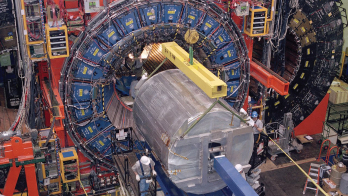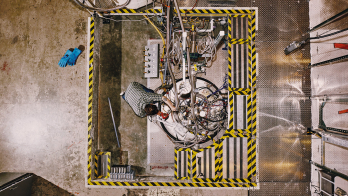The central tracker detector of the Anti Matter Spectrometer (AMS) arrived at CERN on 25 September ready for assembly with the other components of the experiment. One of the main goals of AMS is to search for antimatter from the early universe. To achieve this, it will fly on board the International Space Station (ISS).

The antiparticles – mainly positrons – that are detected in cosmic rays on Earth or in the atmosphere are almost certainly the by-products of interactions. By going above the atmosphere, AMS should detect any antimatter among the primary cosmic rays. Detection of a significant quantity of antimatter on the ISS would constitute irrefutable proof that there is still an active source of antimatter in the cosmos. AMS will also look for dark matter by trying to detect the annihilation products of the hypothesized supersymmetric particles, and measure more precisely the composition of cosmic rays.
The central tracker was constructed at the University of Geneva and will soon be surrounded by a powerful cryogenic magnet and other high-precision detectors. The assembly and construction of the whole experiment, which will weigh more than 7 tonnes, will be finalized next spring.
AMS must be ready and delivered to the Kennedy Space Centre in Cape Canaveral, Florida, by the end of 2008 at the latest. It will be launched on a space shuttle and will remain on board the ISS for several years.







